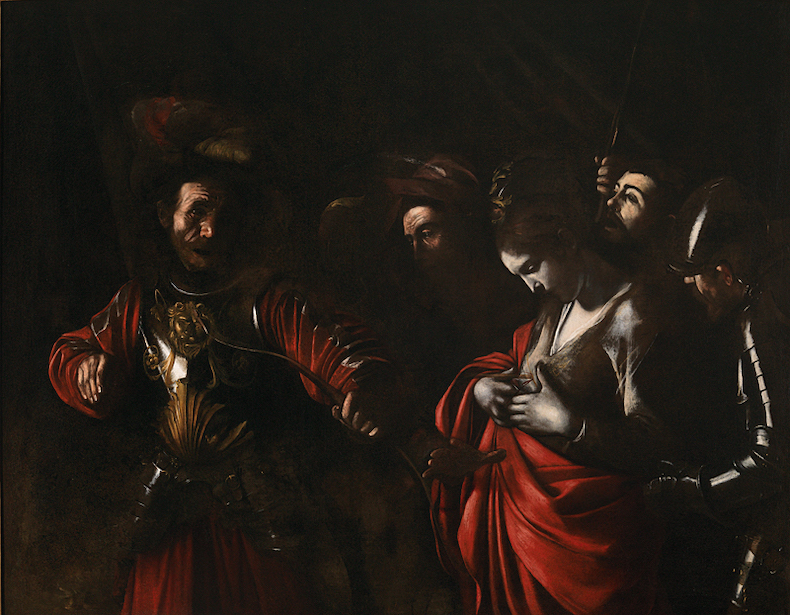In The Martyrdom of Saint Ursula (1610), Caravaggio captures the final moments of the life of the titular figure. Medieval legend has it that princess Ursula, daughter of King Dionotus of Dumnonia (the historical region that now encompasses much of south-west England), undertook a pilgrimage to Rome, accompanied by 11,000 handmaidens. When passing through the Hun-occupied city of Cologne, the group was captured, the handmaidens slain, and Ursula fatally shot with an arrow after rejecting the Hun leader’s proposition. The action-filled painting’s inky tenebrism and bursts of red are characteristic of a master still in his prime. The work, however, would prove to be his last: two months after its completion and at the age of 38, Caravaggio died of unknown causes. In London for the first time in 20 years, the painting will be on display at the National Gallery (18 April–21 July). It is accompanied by a letter to the work’s commissioner, nobleman Marco Antonio Doria, from his Naples-based procurator Lanfranco Massa, discussing its creation. Another late work by Caravaggio, Salome with the Head of John the Baptist (c. 1609–10), will be hanging nearby. Find out more from the National Gallery’s website.
Preview below | View Apollo’s Art Diary

The Martyrdom of Saint Ursula (1610), Michelangelo Merisi da Caravaggio. Gallerie d’Italia, Naples. Photo: Luciano Pedicini; © Archivio Patrimonio Artistico Intesa Sanpaolo

Letter from Lanfranco Massa to Marco Antonio Doria. Photo: © Archivio di Stato di Napoli

Salome Receives the Head of John the Baptist (c. 1609–10), Michelangelo Merisi da Caravaggio. Photo: © National Gallery, London














![Masterpiece [Re]discovery 2022. Photo: Ben Fisher Photography, courtesy of Masterpiece London](http://zephr.apollo-magazine.com/wp-content/uploads/2022/07/MPL2022_4263.jpg)
‘Like landscape, his objects seem to breathe’: Gordon Baldwin (1932–2025)